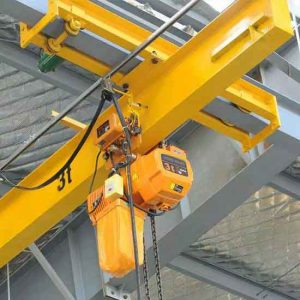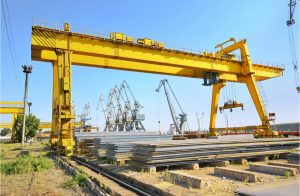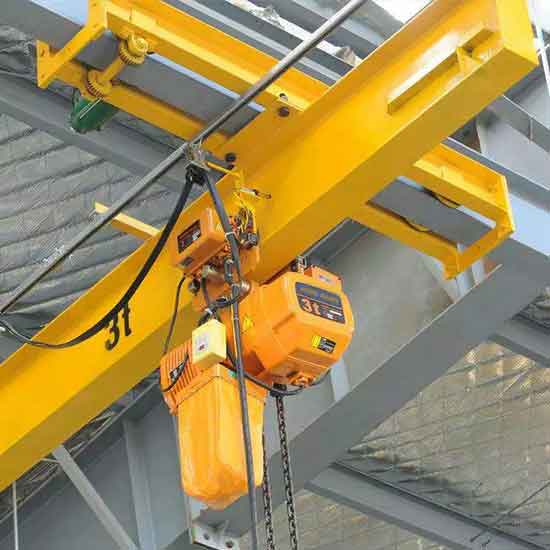
Gantry crane applications
Construction industry: for lifting and moving construction materials
Steel industry: for moving steel sheets and sections
Ports and warehouses: for loading and unloading ships and trucks
Industrial workshops: for moving heavy parts

Types of gantry cranes
Single-bridge gantry crane: It has one bridge and is suitable for lighter loads and smaller spans
Two-bridge gantry crane: It has two bridges and is suitable for heavier loads and larger openings
Semi-gantry gantry crane: It is a combination of gantry and overhead crane, and one of its legs is connected to the building.

Gantry crane applications
Construction industry: for lifting and moving construction materials
Steel industry: for moving steel sheets and sections
Ports and warehouses: for loading and unloading ships and trucks
Industrial workshops: for moving heavy parts
Gantry crane
A gantry crane is a type of industrial crane that is used to lift and move heavy loads over short distances.
These cranes consist of a horizontal bridge mounted on two vertical legs.
These legs move on rails or wheels so that the crane can move along a certain path.

Gantry crane structure
Bridge: It is the main member of the crane on which the beams and load lifting mechanisms are mounted.
Abutments: These are the vertical members that support the bridge and move on rails or wheels.
Girders: They are located on the bridge and load lifting mechanisms are attached to them.
Lifting mechanisms: include winches, hooks and other equipment for lifting and moving loads.
Control system: It is used to control the crane movement and lifting mechanisms

Types of gantry cranes
Single-bridge gantry crane: It has one bridge and is suitable for lighter loads and smaller spans
Two-bridge gantry crane: It has two bridges and is suitable for heavier loads and larger openings
Semi-gantry gantry crane: It is a combination of gantry and overhead crane, and one of its legs is connected to the building.

Gantry crane applications
Construction industry: for lifting and moving construction materials
Steel industry: for moving steel sheets and sections
Ports and warehouses: for loading and unloading ships and trucks
Industrial workshops: for moving heavy parts






